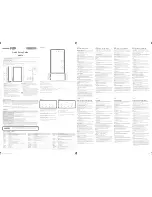
6
World Precision Instruments
From this output, a calibration curve Fig. 4 can be created by plotting the changes
in current (pA) against the changes in concentration (mM). The slope of this curve
indicates sensitivity of the probe.
Fig. 4—
Calibration Data
Interference Temperature
The background current of the sensor will usually increase with increasing
temperature of the experiment. Although, the sensitivity of the sensor does not
change significantly within the range 20-37°C, it is recommended that any calibration
should be performed at the same temperature as the experiment.
The sensor works best between pH 3–10. Changing the pH of the solution does not
affect the sensitivity. However, if the pH is below 3.0, the noise of the sensor will
increase. At pH 10.0 and higher, the response of the sensor will diminish significantly.
SENSOR CARE AND MAINTENANCE
Durability and Handling
The sensor is relatively durable, except for the membrane sleeve. Exercise caution
when handling any sensor to avoid actions that could damage the sensor tip. Pay
particular attention to the sensor membrane, because the membrane is extremely
delicate and improper handling will lead to damage. With proper care and by following
the instructions, a membrane sleeve should last more than one month.
Refer to the Probe Unpacking Instructions that came with your sensor for handling
instructions.
CAUTION
: Do NOT scratch the sensor membrane sleeve. Do NOT wipe the
sensor membrane
with anything, even Kimwipes. If necessary, squirt it with
distilled water or compressed air.
Содержание ISO-HPO-2
Страница 2: ......
Страница 4: ...ii World Precision Instruments...


































